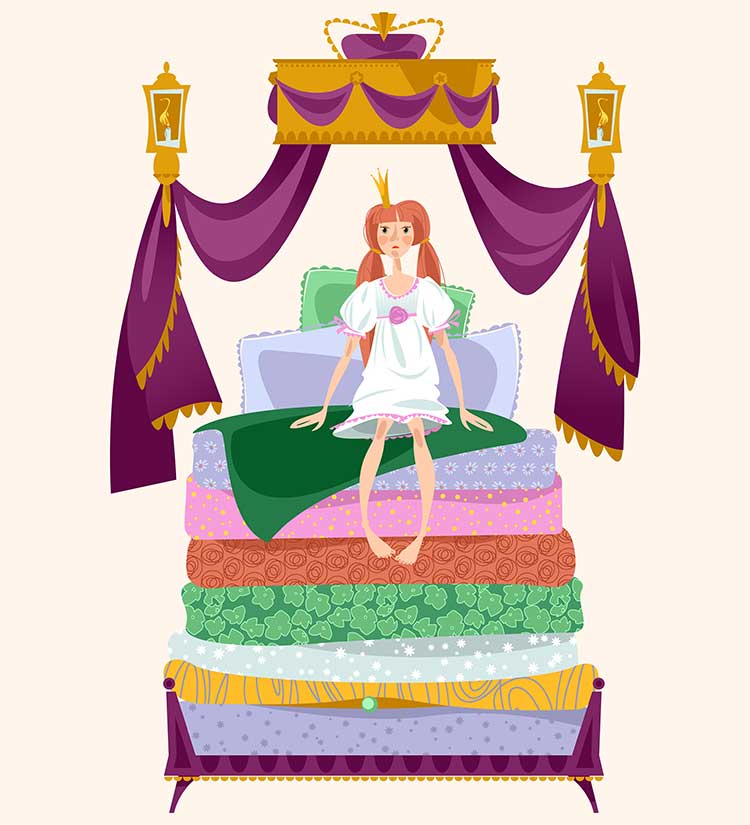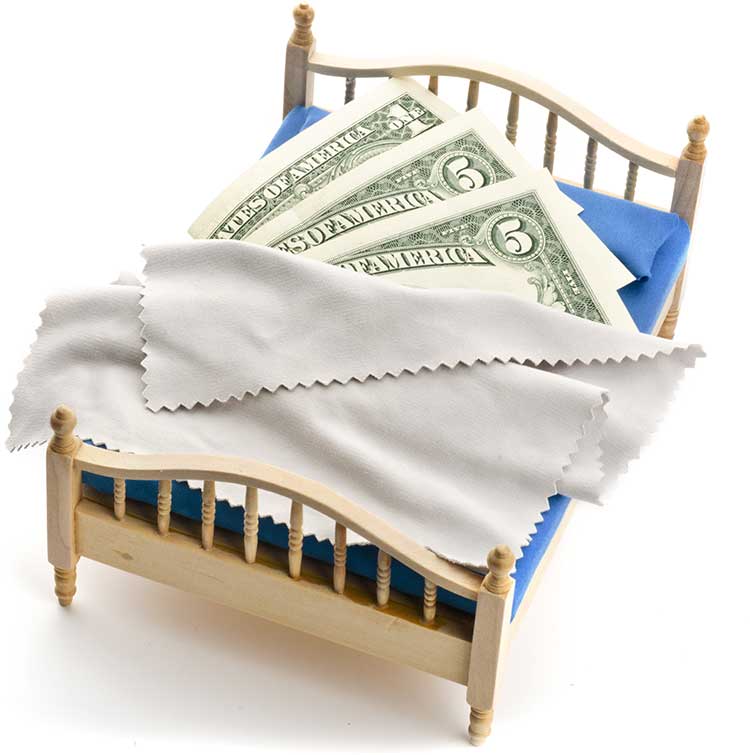Last updated November 2024

There used to be just one way to buy a new mattress: Visit the nearest retailer, look at a handful of similar models, pick one, and—as soon as the next day—you were snoozing on it. Now mattress shopping has become almost as complicated as remembering what you dreamt while sleeping on one. With consumers placing a good night’s rest at the top of their priority list, manufacturers and retailers have responded with an array of materials, components, and features as well as the ability to order online.
“There are almost too many beds from which to choose,” said Marten Carlson, a spokesperson for the review site MattressClarity.com. “There are so many options, in fact, that mattress buyers, even after they narrow down their needs, often face shopper paralysis.”
According to the Mattress Consumer Research Report 2023, from The Better Sleep Council, while 67 percent of consumers know which mattress size to buy, only 44 percent know where to buy one. Just 32 percent of shoppers feel confident in their knowledge of mattress types.
In some ways, online ordering has made it easier to shop because you can sometimes compare prices across retailers. On the other hand, the sheer volume of mattress choices and retail outlets has made it more difficult, Carlson said.
The biggest disruptors of the industry? So-called “bed-in-a-box” online retailers (Casper, Helix, Purple, Saatva), which make their own mattresses and ship them directly to consumers. These businesses cater to shoppers’ changing behavior and people who don’t want to buy from mattress chain stores.
When it launched in 2014, Casper’s bed-in-a-box concept shook up the industry, spurring traditional brands such as Beautyrest, Mattress Firm, and Sealy to start selling their products online, too. Online sellers Purple, Saatva, and Tuft & Needle soon opened their own brick-and-mortar showrooms or partnered with large retailers to showcase their merchandise.
But among local stores and chains that sell conventional brands (Beautyrest, Sealy, Serta, Simmons, Tempur-Pedic), comparing prices remains incredibly difficult. For 40 years, Consumers’ Checkbook’s researchers have sought a way to collect pricing for the same mattress models from major sellers but continue to find it impossible to do so. The industry has carefully created a system that makes it impossible to shop around.
Most retailers (especially large ones) pay manufacturers to supply them with products that are seemingly unique to their stores. This practice, called “private labeling,” means that at one store the same model might be called “Slumberking,” while at another the tag reads “Sleepyhead” or whatever. Most stores also arrange to have models covered in a unique color of fabric or have the manufacturer use slightly different stitching or trim. The intent? To create an illusion that all the products sold in the store aren’t available elsewhere to prevent customers from shopping for lower prices.
Before You Start Shopping
Do a self-inventory. “Sleep needs are as unique as fingerprints,” said Mary Helen Rogers, spokesperson for the International Sleep Products Association, an industry lobbying group. Start by taking The Better Sleep Council’s Better Bed Quizzz. Answer its questions and it will generate a profile to match you to your best type of mattress.
Also consider your body type. “Are you petite or do you have a large frame? Heavier adults may need a firmer bed, despite their sleep position,” said Grace Wu, textiles product reviews analyst at the Good Housekeeping Institute.
Research. You don’t need to take a deep dive into coil tension or cooling specifications, but it doesn’t hurt to learn about the different types of mattresses on the market—traditional inner spring, memory foam, hybrid (foam and coils), latex, and latex hybrid—and the pros and cons of each, said Wu. Memory foam cradles your body, but it’s the enemy of “hot” sleepers because of the hugging sensation. Natural latex is cooler, durable, and bounces back to meet you, so you’re sleeping on top of the mattress, not sunk into it.
Set a budget. Mattresses are a big purchase, averaging from $600 to $1,500 for a queen-sized model, according to The Better Sleep Council. Like the auto industry, most brands produce three levels—base, deluxe, and supreme—based on materials, components, and number of layers of foam. Be realistic about what features you do (and don’t) need. Odds are that many models will work for you.
Try before you buy. Do the “rest test.” To check out a potential mattress, lie down with a pillow for a minimum of five minutes in your normal sleeping position. Don’t just sit on it—this is not about butt comfort. Bring your sleeping partner along. Then both of you should toss, turn, or bounce to determine if the motion is felt on the other person’s side. Some mattresses are better at isolating movement, and this ensures that neither of you disturbs the other, said Consumer Reports home editor Tanya Christian. You may also want to sit on the mattress edge to ensure it supports you as you get in and out of bed.
Time your purchase. Rogers said you might score discounts in November and December, when stores offload this year’s models as next year’s come in. But know that most advertised discounts are off “list” or “regular” prices that retailers rarely actually charge. Even if the sign or price tag says “60 percent off,” it’s probably not a legitimate discount; it’s just an attempt to provide the illusion of savings. So don’t let a supposedly one-time sale rush you.
Shop around. For some brands—for example, Casper and Purple—you can compare prices offered by stores that sell them. But for many other brands, because of private labeling, you’ll have to visit stores to test out models and compare costs for ones you like best.

Shopping In-Store
Not only do consumers have more mattress choices, they also have more choices of where to buy them. Think mattress specialty stores, furniture shops, single-brand retailers (Sleep Number, Tempur-Pedic), online, discount stores such as Walmart, warehouse clubs, department stores, and even home improvement stores.
Mattress specialty stores have a reputation for pushy salespeople, hard-sell tactics, and used-car-lot-style bartering. While a few have stopped such predatory methods, many others still incentivize associates to sell you more bed than you need or can afford, or to push models they are anxious to clear from the sales floor. Don’t let them.
Instead, tell the salesperson your price point and show them your Better Bed Quizzz results. Ask them to point out three options. Tell them: “Let me do rest tests, and then I’ll come and find you.” A savvy associate will let you do your thing. If they won’t leave you alone or make you feel uncomfortable, walk out. There’s also no harm in asking about teacher, student, or military discounts, or if they will throw in any accessories to seal the deal, advises Consumer Reports’ Christian.
Get answers to the following: Is this mattress designed to go with a specific foundation? (Some must pair with an accompanying box spring, while others won’t work with an adjustable base.) How do you recommend I care for it? What is your return policy, and how many days do I have? Are there any restocking fees? If I do return the mattress, do I get my money back or a replacement? Do you deliver, and is there a fee? Is there a charge for mattress setup aka “white glove service?” Will you haul off my old mattress?

Shopping Online
With online retailers you shop at your own pace, bypass a salesperson, compare models and prices, and easily look at specifications, materials, and firmness, said Wu. The trick is to do some preliminary research by checking out reviews and tests conducted by Consumer Reports, the Good Housekeeping Institute, and Wired.com.
If you can find an internet-based brand in a brick-and-mortar store within an hour’s drive, do an actual rest test. You can still buy it online, said Carlson.
Brands such as Purple can be found in mattress specialty stores, while Saatva has mini showrooms with the same online models available for in-person assessment.
Before having a bed-in-a-box shipped to you, ask:
- How long is the sleep trial? (Some online brands won’t let you return a mattress for the first 30 days.)
- Is shipping free? What about delivery and setup?
- Are returns free, or is there a pickup charge?
- What are the terms of the warranty? Wu warns that most warranties only cover manufacturing issues, which are hard to prove.
If the website doesn’t clearly answer FAQs, call the toll-free number or use online chat, if available.
Delivery is usually free for both traditional mattresses and box beds. But caveat emptor: Mattresses can be heavy and cumbersome.
You don’t want to come home alone to find one propped against your front door. Unless you have a group of BFFs to lend a hand, it’s worth the price for white glove service.
“Even though the box is small, the mattress has been vacuum compressed. It’s heavy and tough to maneuver,” Wu said. The average memory foam mattress weighs 80 pounds, while a queen-size latex hybrid can weigh up to 120 pounds. Carlson once had to schlep a 250-pound floppy hybrid from Purple up a flight of stairs on his own.
Sleep Well
Once your mattress arrives, read the tag—you know, the one with the warning not to tear it off under severe penalty. That tag will show the year and city of manufacture, so you can ensure that it’s new. More importantly, the tag must state that the mattress passed federal flammability standards.
Take advantage of whatever sleep trial the retailer gives you. Some models need a month to truly break in and conform to your body, said Carlson.


